We had enjoyed our stay at the Hotel Taddart, Midelt, even if it was slightly whacky in appearance and decor. The isolated desert setting against the frame of the High Atlas however, and the hotel gardens housing numerous flowering roses, was lovely.
We were amazed - and amused - to find out later that the tacky fake fossil laminate bench tops in our room were actually genuine black marble slabs housing ancient Orthoceres specimens (primitive squid-like marine invertebrates) and Ammonite species some 520 million years old! It was a wake-up call as to the magnitude of fossilised marble found in the Sahara region. Initially we were horrified at the thought of developers harvesting the fossils out of the desert for commercial purposes - until we talked with various local Moroccans and business people and also saw the extent of the use of the marble throughout central and southern Morocco. Alan was astounded that even a public toilet he used that day was made from black fossilised marble! One marble dealer said to us "Ahh, you see. Other African countries have oil and minerals. We have marble and fossils".
Midelt was deadly quiet as we drove in the early morning along main street. It was a Sunday and it all seemed somewhat like a ghost town, with most of the shops and businesses closed for the day. We were interested that the town exuded a feeling of some prosperity. Midelt was obviously well set up for tourists with numerous art shops and museums selling fossils and marble furniture. Some of the hotels we passed were really grandiose, looking more like stone kasbahs and fortresses but we had to admit they looked quite in keeping with their surrounds.
We were all in very good spirits that morning and looking forward to our long journey to Tinghir which would take us over the untamed High Atlas mountains, and through some of the most incredibly wild country we had seen in Morocco. Mohamed was in fine form too. It seemed the further he was away from the cities and nearer to his beloved Sahara, the happier he became. He had quite an outrageous, if rather whacky sense of humour and would suddenly burst into song or yell out of the window at any donkeys we passed "Hello, hello Jimmy Hendrix!" I'm not quite sure what the resemblance, if any, was but it was all quite hilarious as we sped along with Mohamed's seemingly one only CD blaring out Jeune et Jolie!
The rural countryside outside Midelt was largely dominated by sheep and wheat farming, and some intensive cropping. As we wound our way toward the High Atlas the scenery was fascinating. Large craggy outcrops displaying massive tilting and rock compression revealed a violent formation of an ancient landscape.
The High Atlas is part of the Atlas Mountain Range which extends for about 2,500 kilometers across the north-western part of Africa through Tunisia, Algeria and Morocco. The highest peak is Jebel Toubkal in south-western Morocco at an elevation of 4,165 meters. The Atlas mountains separate the Mediterranean Sea and the Atlantic Ocean from the Sahara Desert and are populated in Morocco by mainly Berber people.
The mountain chains that comprise the Atlas were uplifted some 60 million years ago as the land masses of Europe and Africa collided at the southern end of the Iberian Peninsular. The resulting subduction (one tectonic plate sliding beneath another) was thought to be partly responsible for the formation of the High Atlas as well as for the closure of the Strait of Gibraltar and the formation of the Alps and the Pyrenees. More recent studies suggest that deep rooted processes in the earth's mantle may also have contributed to the uplifting of the High and Middle Atlas.
Massive tilting, twisting and folding was very apparent in the barren and arid landscapes we drove through, providing us with fabulous appreciation of the monumental tectonic forces that formed the High Atlas. Some rock formations looked like they had been squeezed like plasticine and reminded us so much of Chalt in northern Pakistan, the very place where the Indian Continent subducted under the Eurasian Mass some 60 to 70 million years ago.
The countryside became more stark and more barren as we climbed. Poorer looking villages dotted the landscape and drab square mud and straw houses and animal yards blended seamlessly into their dusty ochre environment. Most were in shocking states of disrepair. We wondered how on earth the inhabitants survived the bitter winters in such poor housing.
Small intensively farmed plots clung to the river flats; the stark green brilliance of the crops contrasting sharply against a framework of surrounding barren mountain peaks. Women worked the plots in long traditional clothing and donkeys mostly provided the transport for the newly harvested crops.
Around an hour out of Midelt we drove through the gated township of Er Rich. A large commercial centre, the township bustled with trucks overladen with freshly harvested produce and bales of hay. Mohamed told us it was an important centre for the nomads to sell and buy their produce.
From Er Rich, we took a side road (R 706) to the right which would take us through a winding back route to Amendar and then to Imichil and to Lake Tislit. The countryside became even more barren. Massive green-grey mountain ranges rose boldly, towering proudly over the high plains with Stegausarus-like rocky outcrops and occasional mesas and buttes. It was wild country.
Small mud and straw villages dotted the plains, all with local small mosques mounted with enormous megaphones. We could hear the call of the Azan as we drove by. Pocket handkerchief sized river plots grew brilliant verdant crops of cereals and legumes. Two women on donkeys trotted by, each donkey loaded up with massive bundles of freshly cut lucerne. The women wore traditional long clothing and headscarves and I could not help but marvel at how they could work all day in such cumbersome gear, let alone balancing their loads while riding the donkeys.
Outside the village of Ait Amar fine looking orchards of ripening apples and early crops of barley, framed by fabulous columnar eroded mountains, dominated the scenery.
Lunch was at a street side cafe at the township of Amendar. We had to admit that Mohamed was good with his choice of restaurants. They were always very clean and the food was always fine, if surprisingly a bit bland. Despite not usually wanting meat for lunch, we ended sharing a lamb tagine which was very good. Mohamed who seemed to live on tagines and cans of sardines, was a pretty fit looking guy so we figured that perhaps the tagines were not all that unhealthy - well, just once or twice shouldn't hurt... And anyway, we had to admit that we should eat how the locals did. Mohamed said he liked cooking and always made tagines. This was his recipe I scribbled on my note pad (paper and the pencil type note pad, that is).
Mohamed's Lamb Tagine
* Heat the tagine, and in a little oil brown the meat.
* Add some chopped onion and cook.
* Add saffron, cumin and salt and a little water and cook for at least one and a half hours.
* Add potato, carrot, capsicum and beans and cook until vegetables are tender.
* Correct seasoning.
Our journey for the afternoon was fascinating. The countryside became more remote and the small farms more primitive. Donkey and mule power seemed to be the main form of transport. We took another right turn and drove on through the village Imilchil and onto Lakes Tislit and Isli.
Mohamed told us of a "marriage festival" that is held at Imilchil every year in December where women get married "free of charge". We guessed that meant their families did not have to provide a dowry or pay for the expense of a wedding. Apparently, it is like a market day when the man can choose the woman of his choice. Apart from the obvious disturbing issue of being treated like a marketable commodity, another downside for the woman is that she cannot get a divorce until the couple have been married for at least one year. I'm not sure whether the story was true but Mohamed insisted that the custom still exists today.
According to popular legend, the Moroccan "Romeo and Juliette" gave their name to the twin Lakes of Tislit and Isli, one being regarded as "Man's Lake" and the other "Woman's Lake". More interesting than that stuff however, is that the lakes are the result of Impact Craters, their formation caused eons ago by two major meteorite fragments. In the mid afternoon, the lakes were picturesque with a certain serenity only found in very still waters.
Our drive from Lake Tislit took us through the most remote and barren high alpine country. A curious ice cream shaped mountain towered in the distance; the closer we came to it the more menacing it seemed.
An hour or so out of Imilchil, indigo skies loomed silently and ominously over the jagged mountains. There was absolutely no doubt we would miss this massive storm. And we didn't. The rain and hail fell so hard that Mohamed had to pull the car over to the side of the road. Thunder roared and the wind became gale force, rocking our very sturdy 4Wd vehicle. On the lonely narrow mountain road, it reminded us of the terrifying snow storm we had encountered in Kyrgyzstan on our way to the remote camp site of Tash Rabat.
A very welcome stop at a small auberge (hotel) gave us time to stretch our legs and enjoy a hot cup of coffee. After the storm, the temperature had dropped considerably and it was very pleasant to sit back and relax in the comfortable chairs of the cosy auberge lounge. The room was decorated with traditional decor and brightly coloured wall hangings, and with incongruous black and white diamond tiled floors. Looking around the room we were amazed to see a framed print of the well known and iconic "Afghan Girl". We love this photo and have a print of it in our living area in our home. I guess the photo is found all over the world but the co-incidence of finding Macke's paintings and then the Afghan Girl was really quite mind boggling.
I had probably driven Alan and Mohamed to distraction about my wish to, at some stage during our Moroccan travels, have a camel ride. I think I have watched Lawrence of Arabia too many times but being a former avid horse rider, the thought of a lone camel ride in the sand dunes has always been very appealing. Perhaps it would be a bit too hard to find an Omar Shariff; maybe just the camel ride would do. I was about to think I had both when...
Not far from a remote but fascinating village looking quite like it had been carved from the mountains, we noticed large butte formations with what looked like mines right at the very top of the structures. We had seen such precariously placed mines in northern Pakistan where they were mined for precious metals. Our road to Tinghir was by then at an elevation of around 2,500 meters and the mountainous countryside was almost barren with the exception of some particularly tough clumping alpine vegetation.
Around a corner in an especially remote part of our journey, Mohamed pointed out on the upper side of a steep slope a camel driver and several camels, including some gorgeous new born calves. The storm was still menacing but Mohamed kindly stopped for me to take some photos. At a death defying speed the camel man despite his long flowing green coat, simply flew down the slope to the car. After an animated conversation our Mohamed told me to go with the camel man; he and Alan would meet me further down the road where it was safer to park.
The opportunity was too good to miss although I did feel a pang of unease when our car disappeared out of sight. A fine featured, handsome young man with a wide smile and brilliant white teeth, our camel friend was quite delightful. The hillside was slippery from the rain and steeper than it looked. The poor camel man had to drag me by the hand up to the camels where to my delight I was able to spend quite some time photographing. I was starting to wonder how much this was going to cost when I looked down at the road and beyond to find Mohamed's car was nowhere to be seen.
It was not the first time I would come to appreciate Mohamed's rather eccentric sense of humour - although at the time alone in the wilds of the High Atlas with just my camel friend, I couldn't quite see the funny side. In fact Mohamed and Alan had driven so far from me that they had to turn back. For a while, and even though I knew it was a joke, it was not a great feeling.
Out of the blue appeared a young boy wearing a brown peaked rain coat. We guessed he was the camel man's son and of course he too would need to be part of the payment. Mohamed always made sure that we paid a fair and reasonably generous payment for any service provided by local people and we were of course always happy to do so. I was delighted with such an opportunity to take some special photos for my blog and we were pleased that our camel friend and his son looked happy too. In this tough alpine environment, we could not imagine how this man's family could survive, let alone eek out a living.
Our road became more and more treacherous, with winding tight hair pin bends and sheer drops some hundreds of meters to the valleys below. Well above the tree line, there would be nothing to break a fall if a car was unfortunate enough to miss a corner. The road from Agoudal to Tinghir in fact appears on various websites under "World's Most Dangerous Roads".
Mohamed stopped the car at a lookout over the wonderful canyon of the Tizi Tirherhouzine (Tirherhouzine Pass). Late in the afternoon and with storm clouds in the far distance, the light on the mountains was fantastic and panoramic view was breathtaking. It was certainly well worth the treacherous road trip. It felt strange however to look out on such a vast view of mountains and gorges and not to see any trees at all - but we were of course at an elevation of 2,709 meters. Mohamed decided to do some death defying antics by recklessly leaping onto some precarious looking rocks right on the edge of the gorge. I couldn't watch. It would be just our luck to lose our driver and have to walk to Tinghir.
On our final leg of our journey to Tinghir, we passed through the bizarre township of Tamtattouchte located on a narrow verdant fertile strip along the Gheris River, beneath towering mountain ranges. From a distance the town blended almost perfectly into the mountainous backdrop. Square block shaped housing with tiny windows, presumably to conserve the warmth, were constructed from local mushroom coloured stone, making the entire township look very pink. And even the housing's cement structures and trimmings were painted pink to match. It reminded us very much of a fascinating small pink village called Abyeneh in central Iran.
We arrived late in the afternoon at our destination of the oasis city of Tinghir. As we drove through the palmeries along the Togda River, it was really refreshing to see groves of robust palm trees and moist luxuriant forest.
Our hotel Maison D'Hotes Kasbah Taborihte was located some 15 kilometers out of town in the pencil thin valley of the Togda River near the famous Todra Gorge. The very attractive kasbah-like hotel was located in the prettiest setting in amongst the abundant forest and right on the side of the steep mountain edge. We were surprised to see there was no vehicle access. Instead, we had to walk with our luggage across a narrow suspension bridge and up a number of extremely steep steps stairs to the hotel. You would not have to be at all unfit or suffer any disabilities to negotiate the climb.
"Now you are SURE our hotel is licensed?" we asked Mohamed - for the umpteenth time. We had depleted our dwindling alcohol supplies and after our long drive were looking forward to a relaxing beer. Mohamed who had assured us it was, we noticed had made an especially rapid get away when we began asking the hotel staff.
"This hotel does not supply the alcohol, madam!" snapped the grumpy manager. We decided to ask other staff as to where we may be able to buy some beer but they all shook their heads. They pointed toward Tinghir and where we could catch a bus - things were not looking good. So we decided to start walking- surely in amongst all the surrounding hotels there would be just one that sold alcohol?
By our sheer good fortune and Mohamed's sheer bad luck, we made our long walk back over the bridge to the Tinghir Road where amongst the confusion of literally hundreds of tourist buses, taxis and cars we spotted Mohamed driving toward us. He had no hope in the world of avoiding us. On boarding his car Alan took control "OK Mohamed - find us some beer!" A huge storm was brewing and as we approached Tinghir, the sky was an ominous indigo-black, streaked with the jagged blinding light of not too distant forked lightning. From the falling cloud formation, somewhere must have been receiving monumental rain.
Sadly for Mohamed, finding beer in downtown Tinghir was not easy. The streets were unbelievably busy and he must have approached at least six different shops, and having to park in several jam packed car parks. Shamefully, we had not the slightest drop of pity, we just kept insisting until eventually he found one place which sold beer - and thankfully in late afternoon was still open.
Mohamed took it all in amazingly good humour. We had experienced a wonderful day and he had provided us with a unique journey along some fascinating and remote destinations. And this is what he truly excelled at.
As we entered our hotel, the now very friendly manager called out to us from downstairs. 'Would you like a beer?" We shrugged and sighed....
Our hotel was busy, full of tourists from a variety of countries. They were really nice people but as we watched the games provided by the tour groups, we sighed. How lucky were we to be on our own and to decide what we did with our time and activities? A quiet night was very much appreciated..... although our Alan was to make up for it and steel show the very next day.
Over the High Atlas: The Camel Man and The Storm
Sunday, May 18, 2014
 Tinghir, Souss-Massa-Drâa, Morocco
Tinghir, Souss-Massa-Drâa, Morocco
Other Entries
-
11"Akragas - Most Beautiful City Mortals Ever Built"
May 0810 days prior Agrigento, Italyphoto_camera16videocam 0comment 0
Agrigento, Italyphoto_camera16videocam 0comment 0 -
12A Quaint Little B & B Called the Antichi Catoi
May 0810 days prior Agrigento, Italyphoto_camera8videocam 0comment 0
Agrigento, Italyphoto_camera8videocam 0comment 0 -
13Agrigento to Palermo - The Sicilian Way.......
May 099 days prior Palermo, Italyphoto_camera8videocam 0comment 0
Palermo, Italyphoto_camera8videocam 0comment 0 -
14Photo Album of The Magnificent Grand Hotel Igiea
May 099 days prior Palermo, Italyphoto_camera8videocam 0comment 0
Palermo, Italyphoto_camera8videocam 0comment 0 -
15Palermo: A Quilted History, A Fusion of Cultures
May 099 days prior Palermo, Italyphoto_camera24videocam 0comment 0
Palermo, Italyphoto_camera24videocam 0comment 0 -
16Treasures of the Conca D'Oro: Monreale & Cefalu
May 099 days prior Palermo, Italyphoto_camera16videocam 0comment 0
Palermo, Italyphoto_camera16videocam 0comment 0 -
17Farewell Sicily OR A Shaky Flight to Tunisia.
May 108 days prior Tunis, Tunisiaphoto_camera5videocam 0comment 0
Tunis, Tunisiaphoto_camera5videocam 0comment 0 -
18Tunisia Profile: Phoenicians to the Arab Spring
May 117 days prior Tunis, Tunisiaphoto_camera5videocam 0comment 0
Tunis, Tunisiaphoto_camera5videocam 0comment 0 -
19Tunis: A City of Brilliant White & Cobalt Blue
May 117 days prior Tunis, Tunisiaphoto_camera21videocam 0comment 0
Tunis, Tunisiaphoto_camera21videocam 0comment 0 -
20Toward the Algerian Border: Destination Le Kef
May 126 days prior Tunis, Tunisiaphoto_camera48videocam 0comment 0
Tunis, Tunisiaphoto_camera48videocam 0comment 0 -
21Tunis: Medinas, Mosques, Cafes & Razor Wire
May 135 days prior Tunis, Tunisiaphoto_camera10videocam 0comment 0
Tunis, Tunisiaphoto_camera10videocam 0comment 0 -
22"If You Love Ladakh, You Will Just ADORE Morocco!"
May 144 days prior Casablanca, Moroccophoto_camera18videocam 0comment 0
Casablanca, Moroccophoto_camera18videocam 0comment 0 -
23Morocco Profile: Ancient Berbers - The Arab Spring
May 153 days prior Fes, Moroccophoto_camera4videocam 0comment 0
Fes, Moroccophoto_camera4videocam 0comment 0 -
24Meknes & Volubilis: The Beautiful People Go to Fes
May 153 days prior Fes, Moroccophoto_camera25videocam 0comment 0
Fes, Moroccophoto_camera25videocam 0comment 0 -
25Fes: At Last Macke's Medina and the Elusive Donkey
May 162 days prior Fes, Moroccophoto_camera29videocam 0comment 0
Fes, Moroccophoto_camera29videocam 0comment 0 -
26Across the Atlas: Auguste Macke's Mann mit Esel"!!
May 171 day prior Midelt, Moroccophoto_camera25videocam 0comment 0
Midelt, Moroccophoto_camera25videocam 0comment 0 -
27Tribulations of the Trilobites
May 18earlier that day Midelt, Moroccophoto_camera12videocam 0comment 0
Midelt, Moroccophoto_camera12videocam 0comment 0 -
28Over the High Atlas: The Camel Man and The Storm
May 18 Tinghir, Moroccophoto_camera45videocam 0comment 0
Tinghir, Moroccophoto_camera45videocam 0comment 0 -
29A Smashing Start: How Often Does the Sahara Flood?
May 191 day later Merzouga, Moroccophoto_camera33videocam 0comment 0
Merzouga, Moroccophoto_camera33videocam 0comment 0 -
30Happy in the Sahara: Desert Foxes & Fossils
May 202 days later Merzouga, Moroccophoto_camera28videocam 0comment 0
Merzouga, Moroccophoto_camera28videocam 0comment 0 -
31Ouzina - A Desert Town With No Streets
May 213 days later Ouzina, Moroccophoto_camera23videocam 0comment 1
Ouzina, Moroccophoto_camera23videocam 0comment 1 -
32To Zagora: Deserts, Floods and Hostile Borders
May 224 days later Zagora, Moroccophoto_camera22videocam 0comment 0
Zagora, Moroccophoto_camera22videocam 0comment 0 -
33A Day Around Zagora OR Just Hamadu and Me
May 235 days later Ouarzazate, Moroccophoto_camera19videocam 0comment 0
Ouarzazate, Moroccophoto_camera19videocam 0comment 0 -
34Ouarzazate: Lawrence of Arabia and More......
May 246 days later Tizi-n-Tichka, Moroccophoto_camera26videocam 0comment 0
Tizi-n-Tichka, Moroccophoto_camera26videocam 0comment 0 -
35Where the Sun Sets OR a Brush with a Cobra!
May 257 days later Marrakech, Moroccophoto_camera12videocam 0comment 0
Marrakech, Moroccophoto_camera12videocam 0comment 0 -
36Finding FedEx Freight For Our Fragile Fossils
May 268 days later Rome, Italyphoto_camera6videocam 0comment 0
Rome, Italyphoto_camera6videocam 0comment 0 -
37Palatine: Foundations of the Eternal City of Rome
May 279 days later Rome, Italyphoto_camera24videocam 0comment 0
Rome, Italyphoto_camera24videocam 0comment 0 -
38Perfect Day in Rome: Tartufo, Piazzas & Basilicas
May 2810 days later Rome, Italyphoto_camera25videocam 0comment 0
Rome, Italyphoto_camera25videocam 0comment 0 -
39Vatican City: The Smallest State in the World
May 2911 days later Rome, Italyphoto_camera25videocam 0comment 0
Rome, Italyphoto_camera25videocam 0comment 0 -
40Heading Home - Shanghai & The Toabao Markets
May 3012 days later Shanghai, Chinaphoto_camera10videocam 0comment 0
Shanghai, Chinaphoto_camera10videocam 0comment 0 -
41Homeward Bound to Australia & Epilogue
Jun 0215 days later Crowdy Head, Australiaphoto_camera2videocam 0comment 0
Crowdy Head, Australiaphoto_camera2videocam 0comment 0

 Tinghir, Souss-Massa-Drâa, Morocco
Tinghir, Souss-Massa-Drâa, Morocco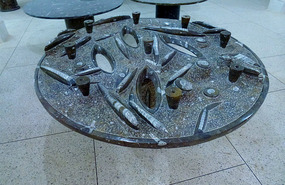
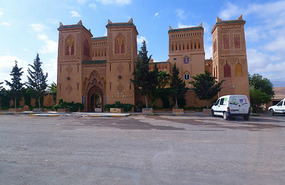
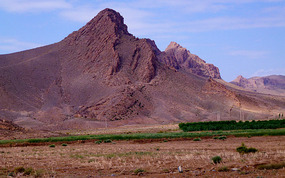
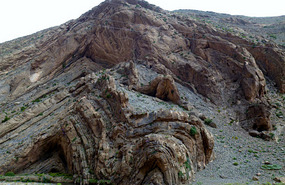
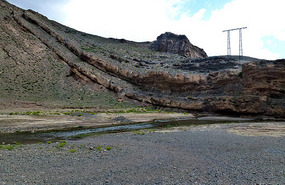
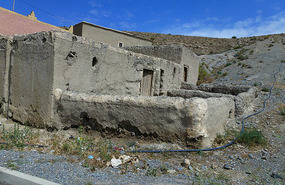
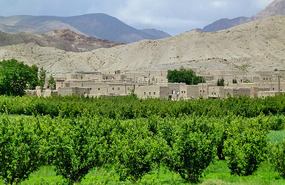
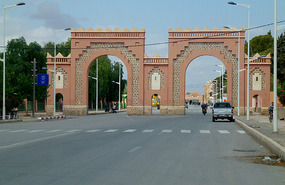
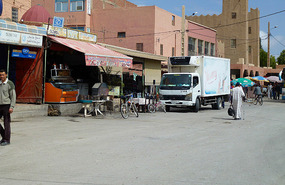
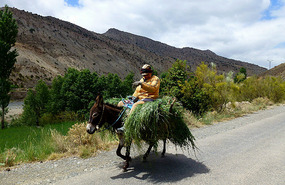
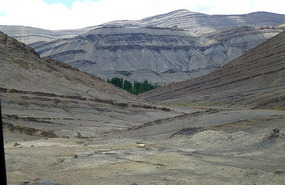
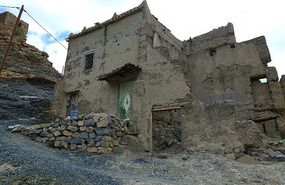
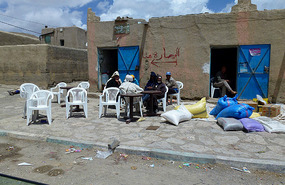
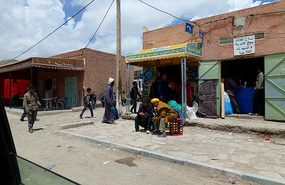
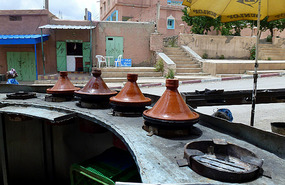
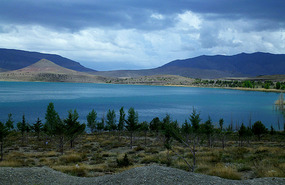
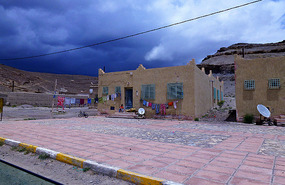
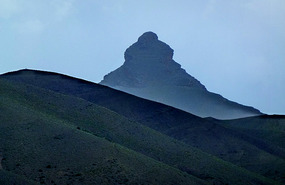
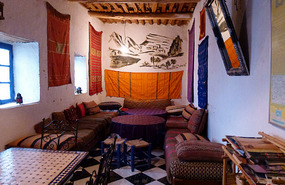
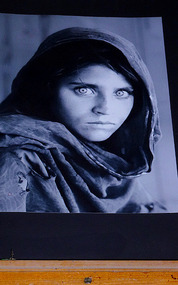

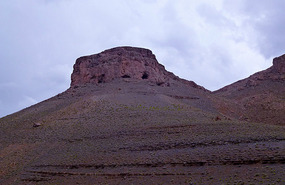
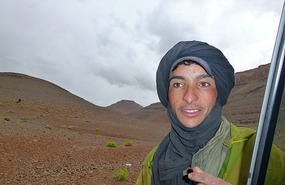
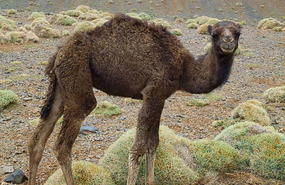
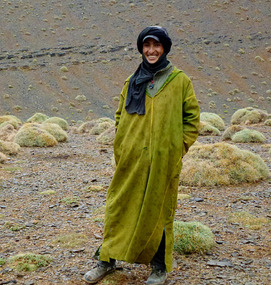
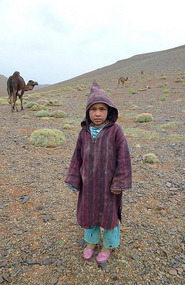
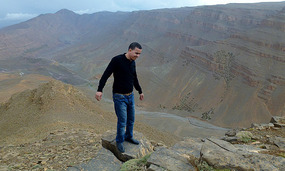
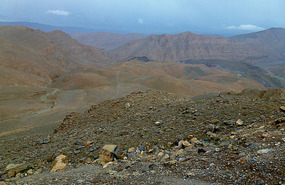
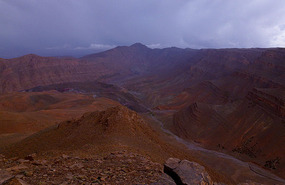
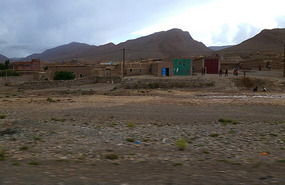
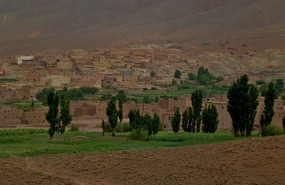

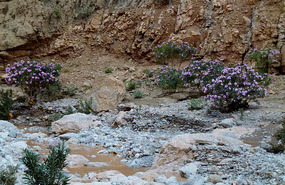
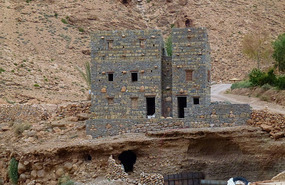
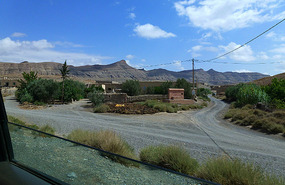
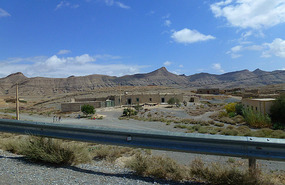
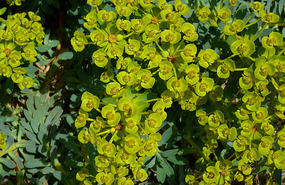
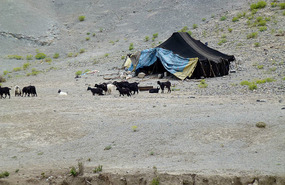

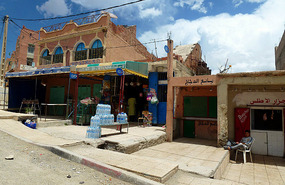
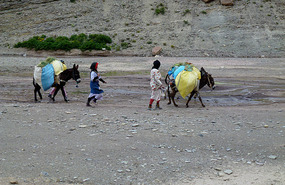
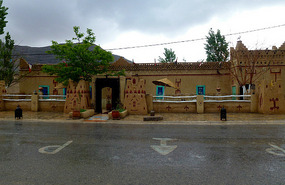
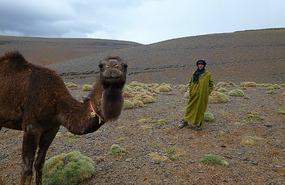
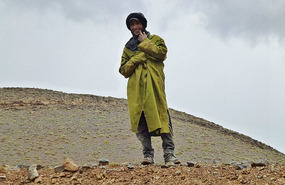
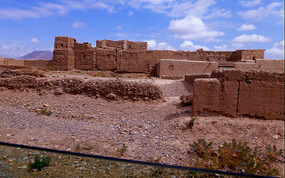





2025-05-22